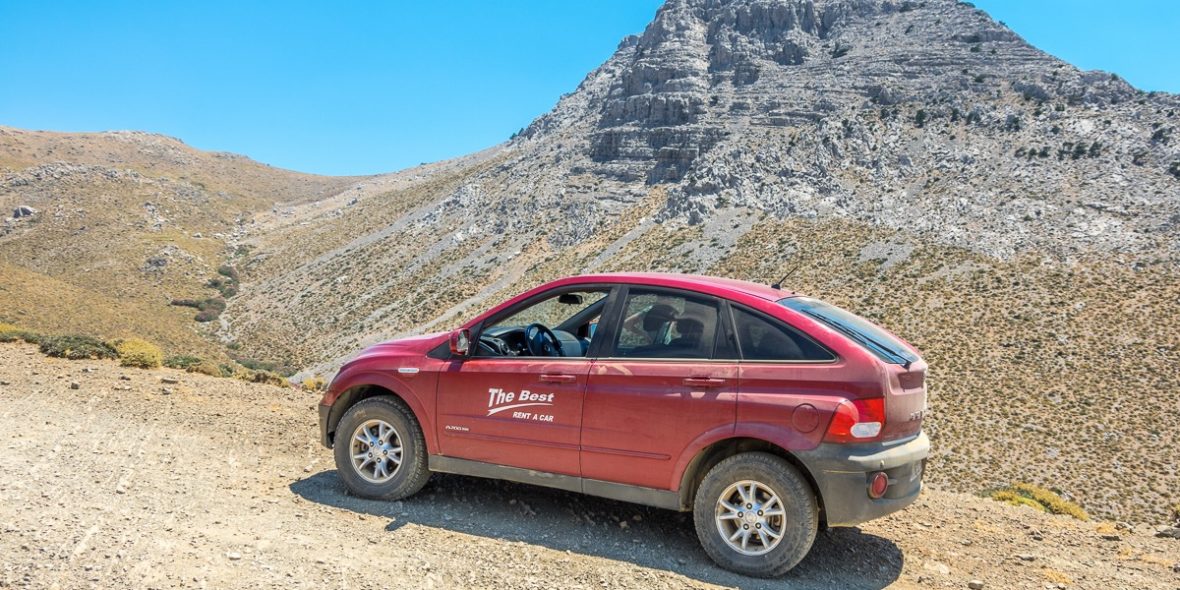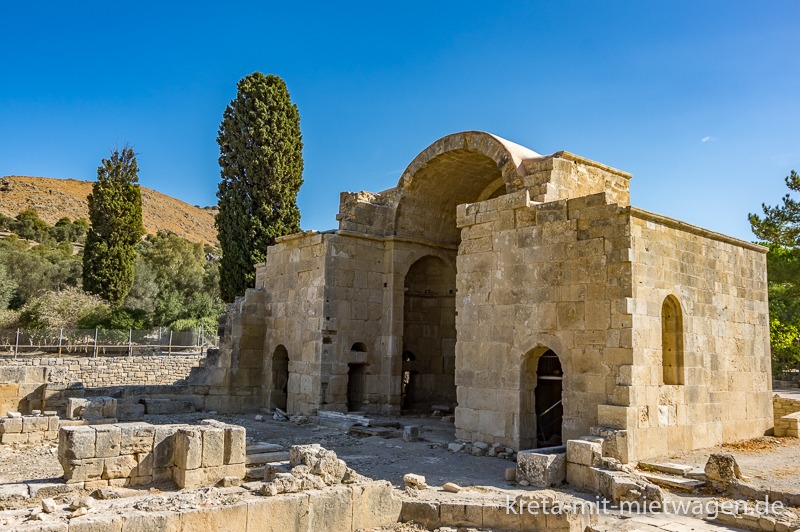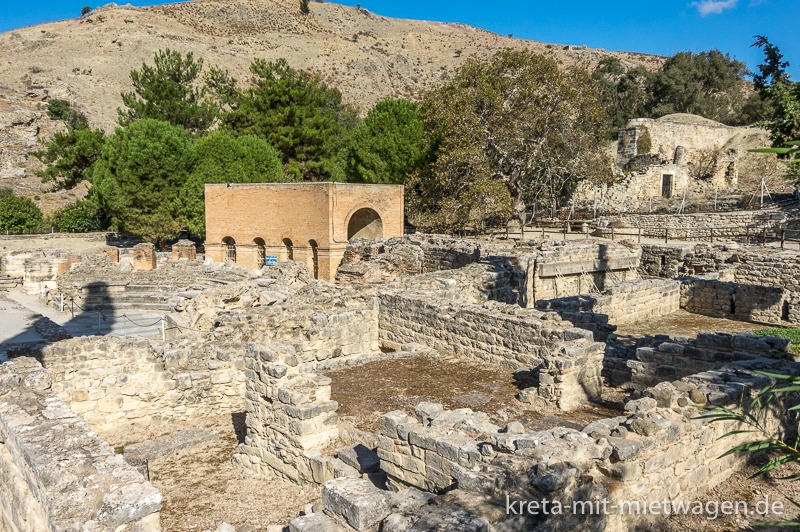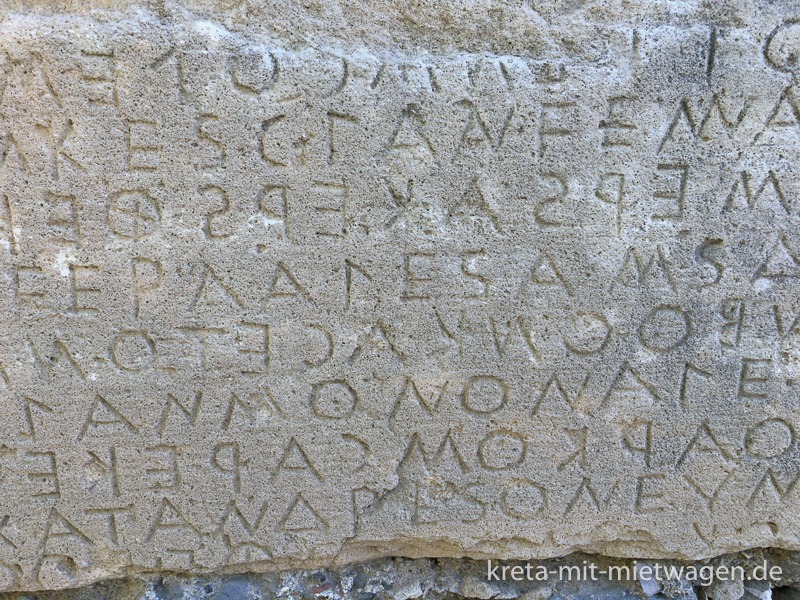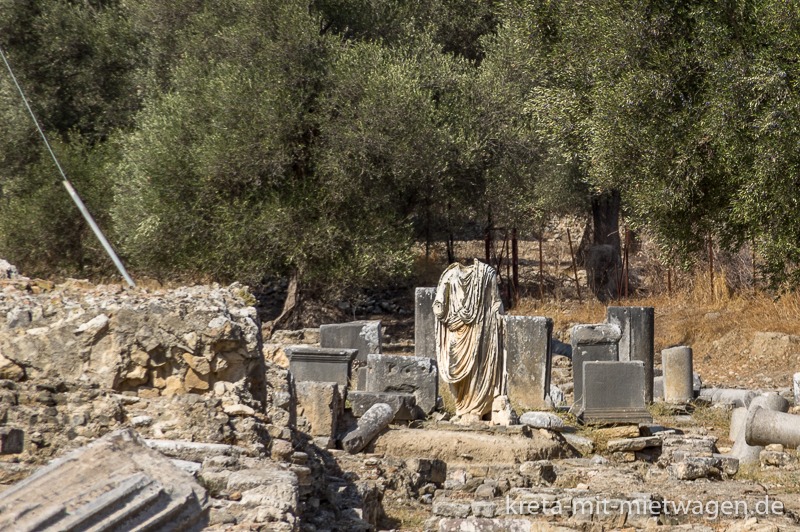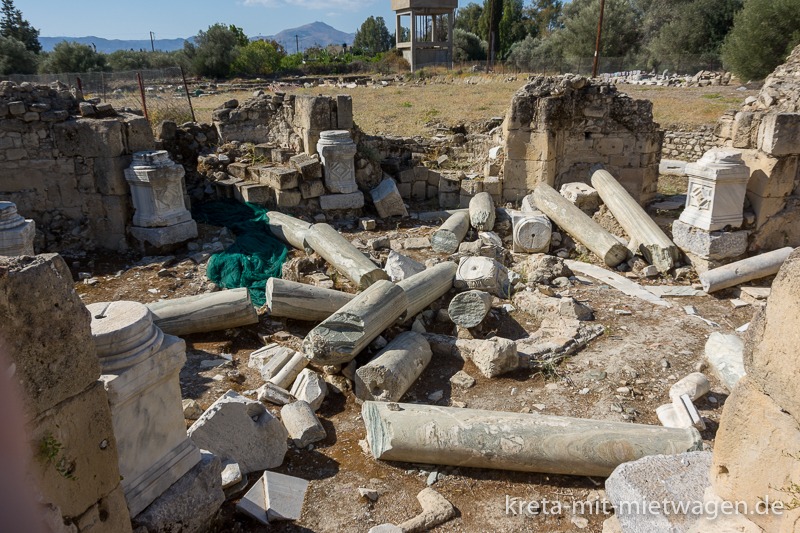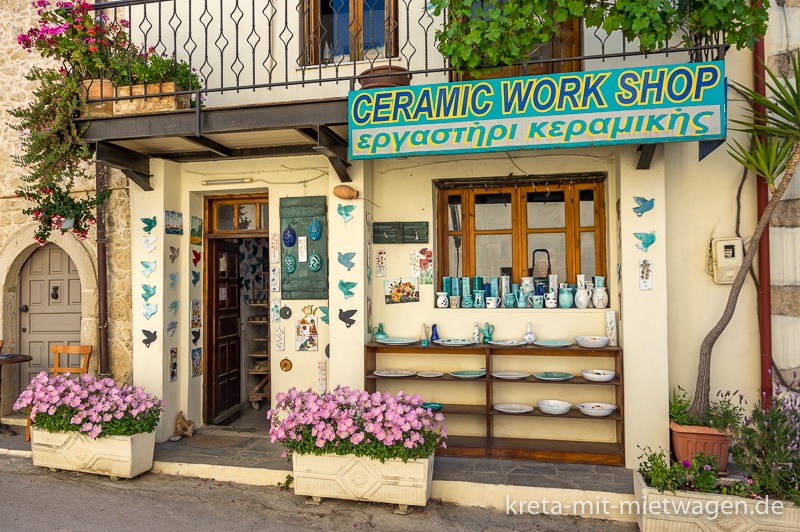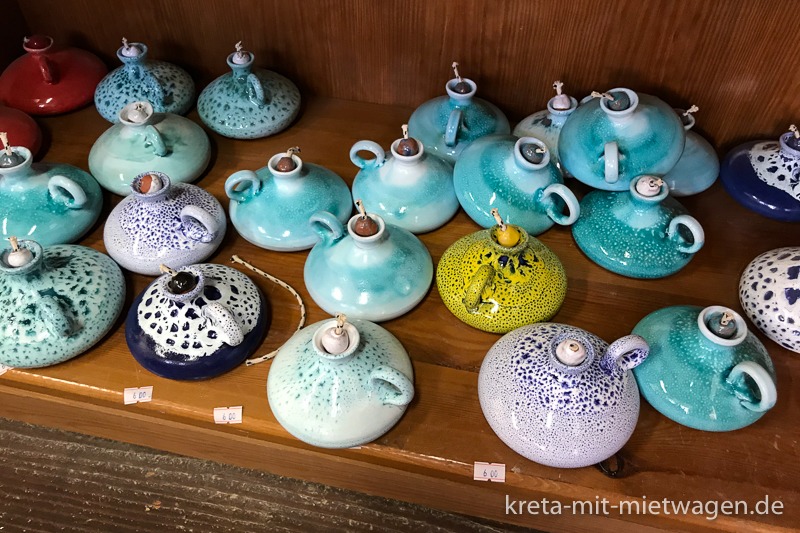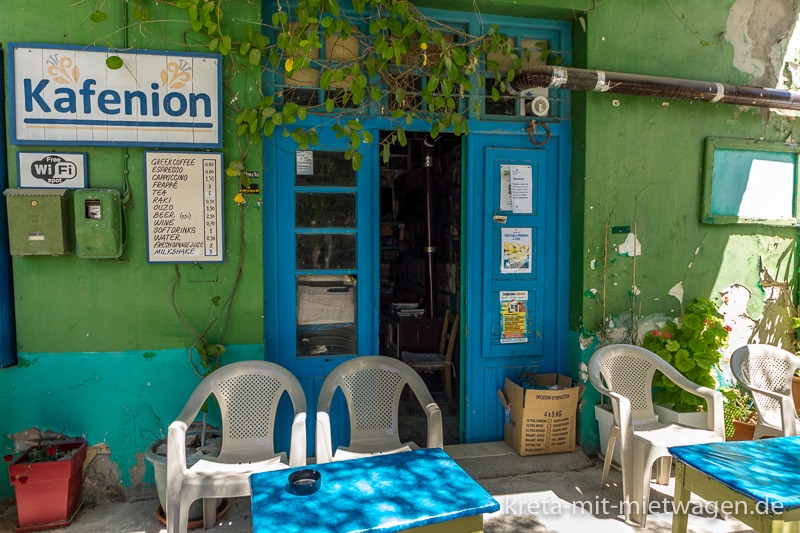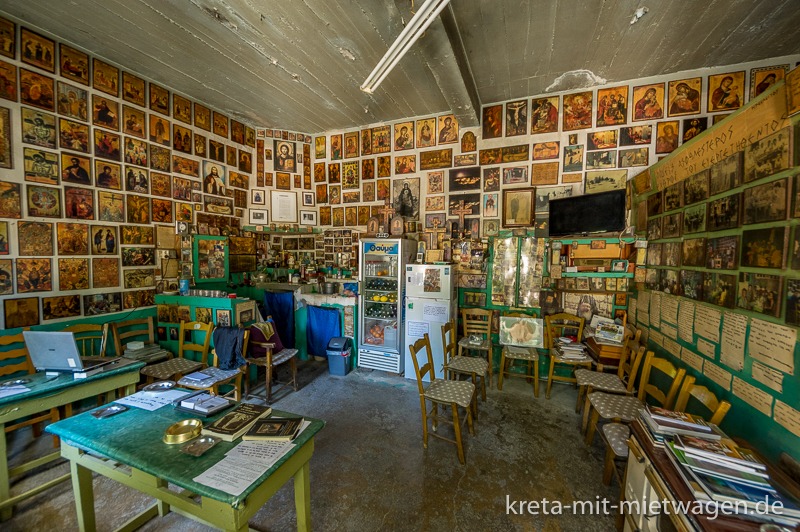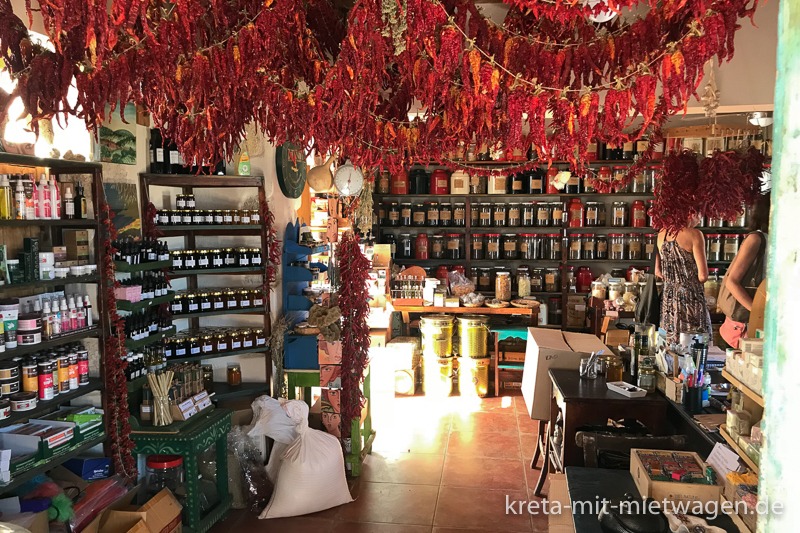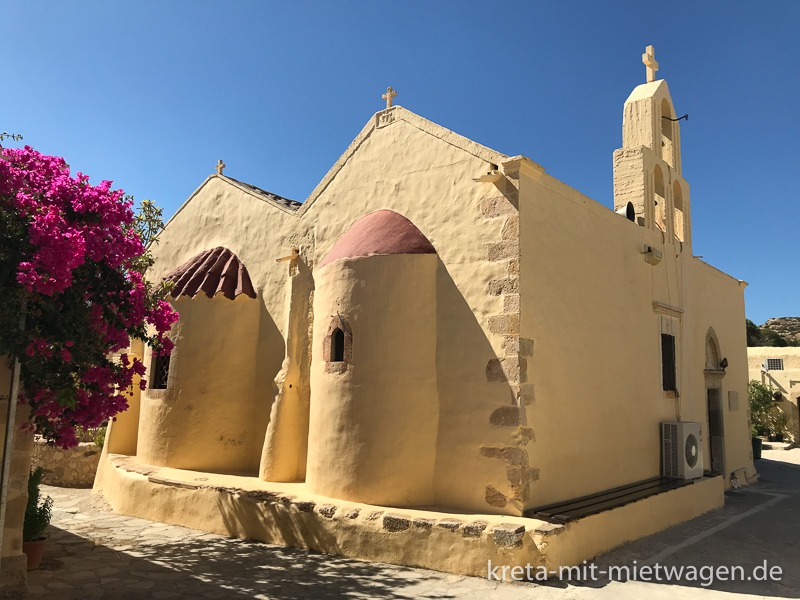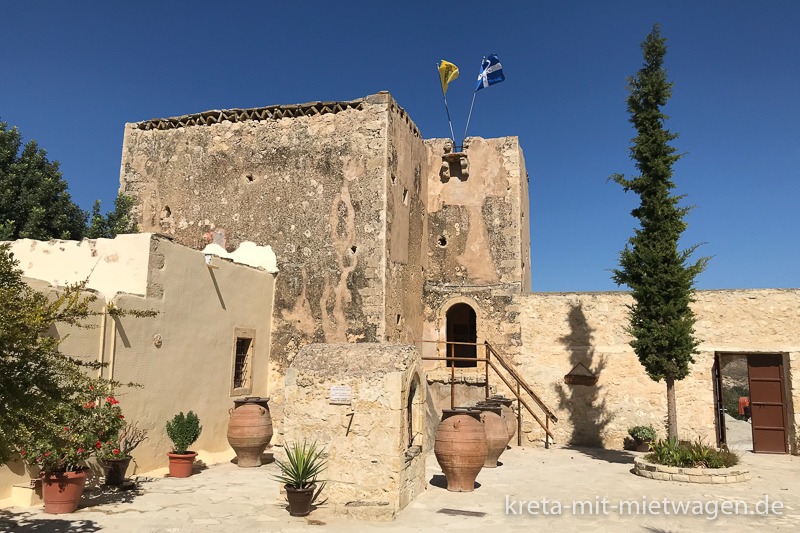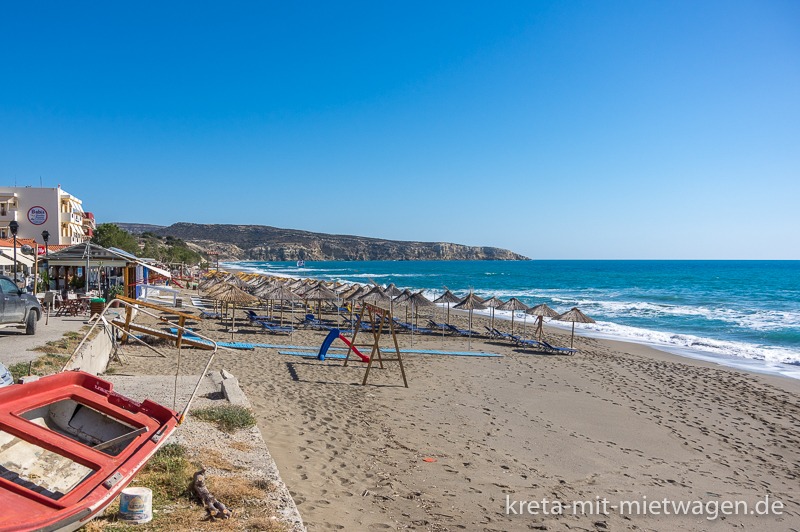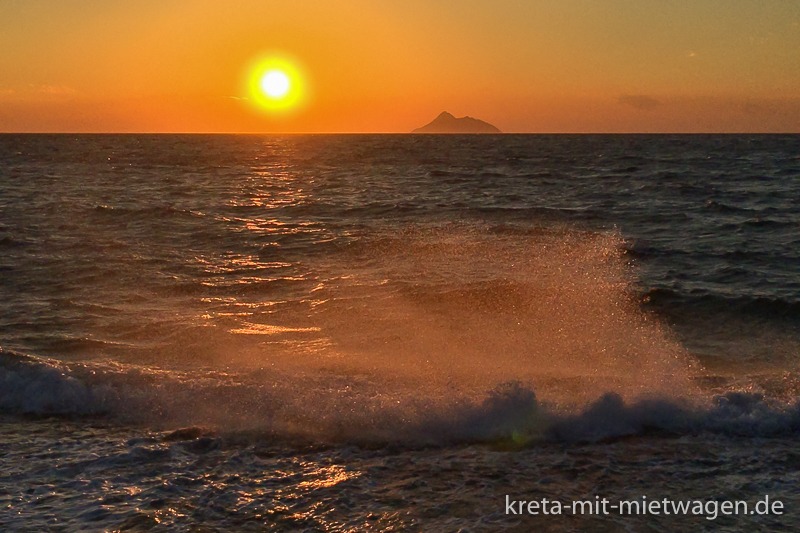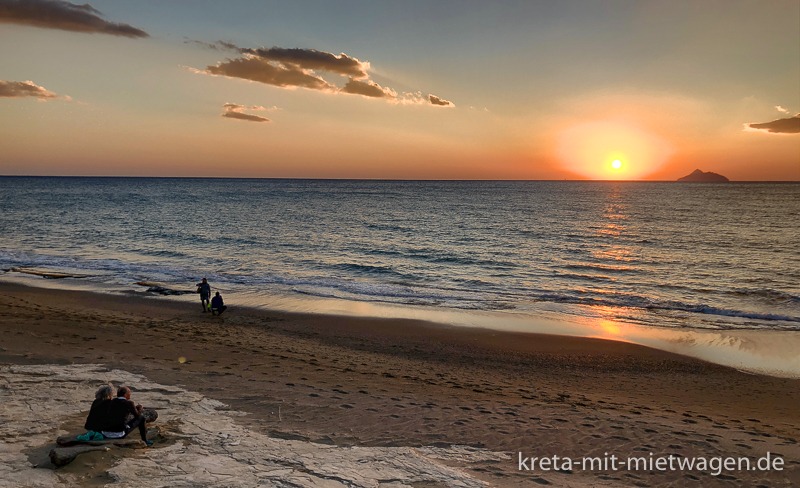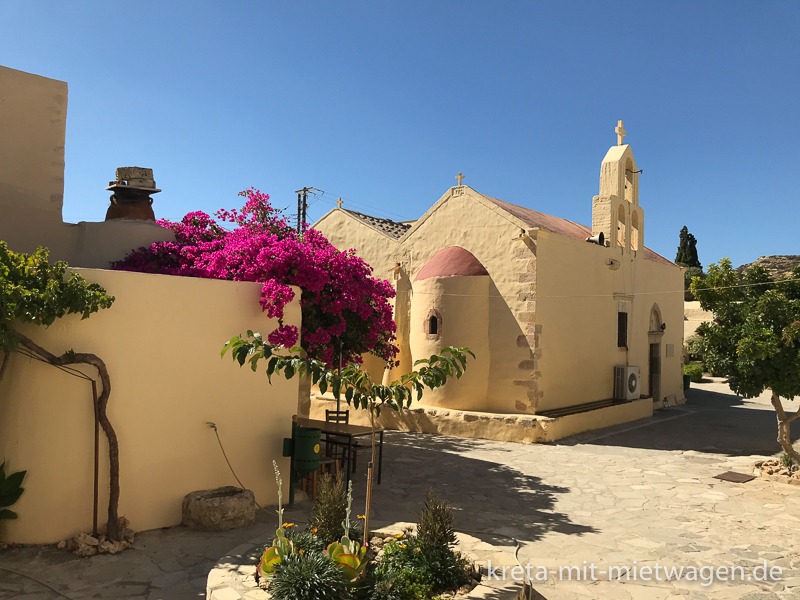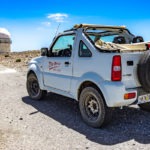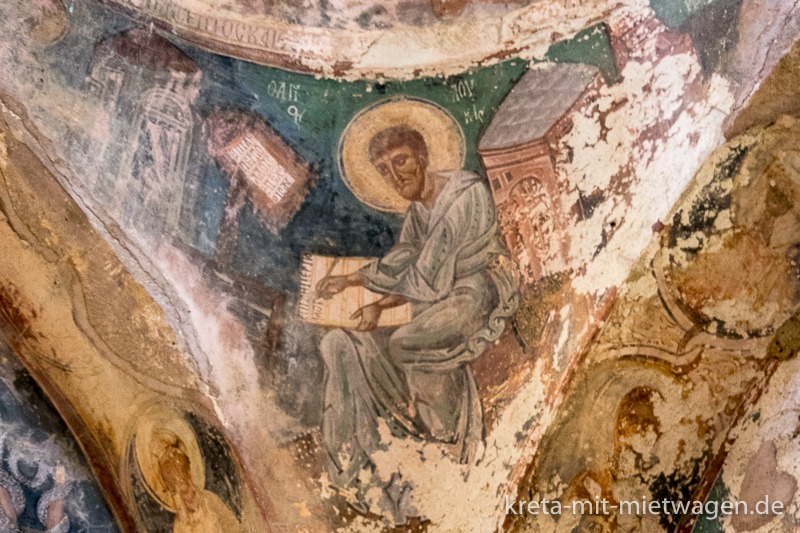
Painting in the church Agios Pavlos in Agios Ioannis
Today we describe an equally worthwhile alternative to our other day trip to the central south, which can be found here.
Of course, individual components of the two excursions can also be combined to form a tour of their own, which simply requires the creativity of the reader. ;-)
The journey to Mires is also described from the north, but of course it is possible to start the tour to Mires at any time.
For those who don’t know the route from the north at all, maybe this video is something that describes the way from the airport Heraklion to the junction Mires:
If you turn off there towards Mires, this main road leads towards the middle south, first through the suburbs of Iráklio and then quickly into the rural wine-growing region around Dafnés.
Also on this tour we do not turn off at the roundabout before Agia Varvára onto the new expressway in the direction of Mires, but drive in the direction of the town centre.
Those who already want to make a stop in this place will find as a speciality several shops with the typical Cretan traditional men’s clothes. Furthermore, there is a shoemaker for the handmade boots that fit perfectly to the pants that are wide at the top and narrow at the calf.
Some curves behind the village, one then has the first view to the huge Messará plain that pours out like a wide green stream between the Asteroussia mountains in the south and the Psiloritis mountains in direction to the libyan sea.
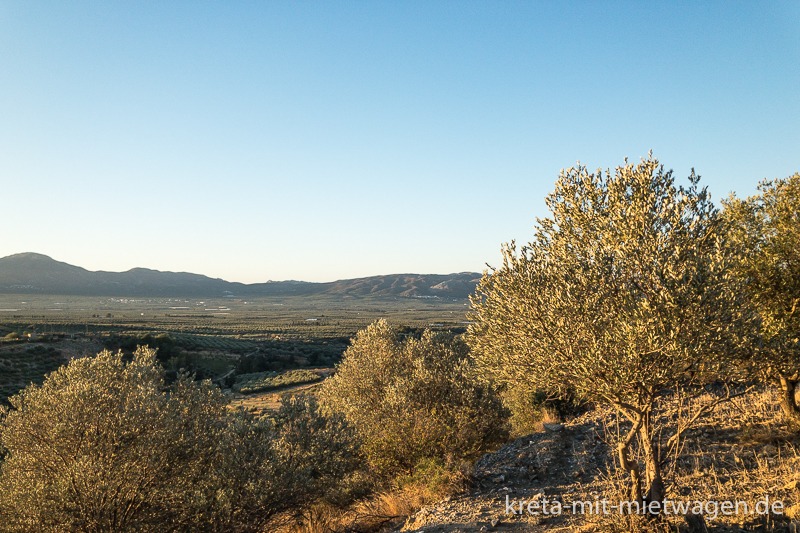
Messara at sunrise
A well-developed but winding road leads down to Agii Déka, the village named after ten Christian martyrs who were beheaded there in the 3rd century A.D. for their faith.
The journey continues past the interesting excavation of Gortys (described in our other excursion tip) in the market town of Mires, quasi the capital of the Messará.
Mires alone is worth a visit. Here, one can really dive into the Greek small town life and watch the hustle and bustle of the people in one of the Kafenía at the Plateía. A stroll is also worthwhile because of the numerous small shops. For a stopover, the café with the best Loukoumádes (fried dough balls, warmly covered with honey and sesame) of the region at the western end of the Plateía is very recommendable.
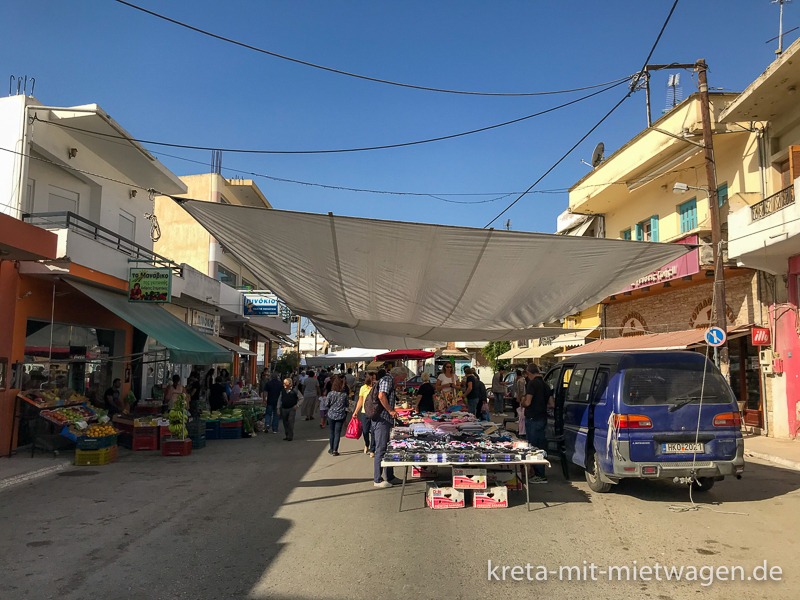
Weekly market in Mires
On Saturday morning everything is different. The city is humming, it’s a weekly market. There’s almost nothing that can’t be bought here. Housewares of all kinds, clothing, underwear, home textiles, meat. Also the delicious handmade cheese of Crete, the Graviéra, thyme honey and the fresh fruits and vegetables of the region can be found here.
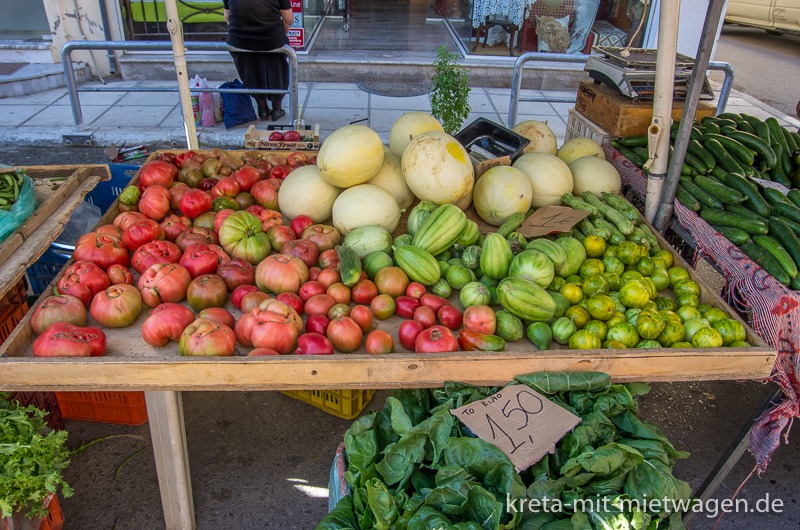
Weekly market in Mires
The offer is loosened up by stalls with beautiful macramé and silver jewellery, as well as different herb stalls.

Herbs stall at the weekly market in Mires
These are not all equally good, so be sure to check the quality before buying.
To finish off the market stroll at the eastern or western end of the market, you can visit one of the Souvlaki stalls.
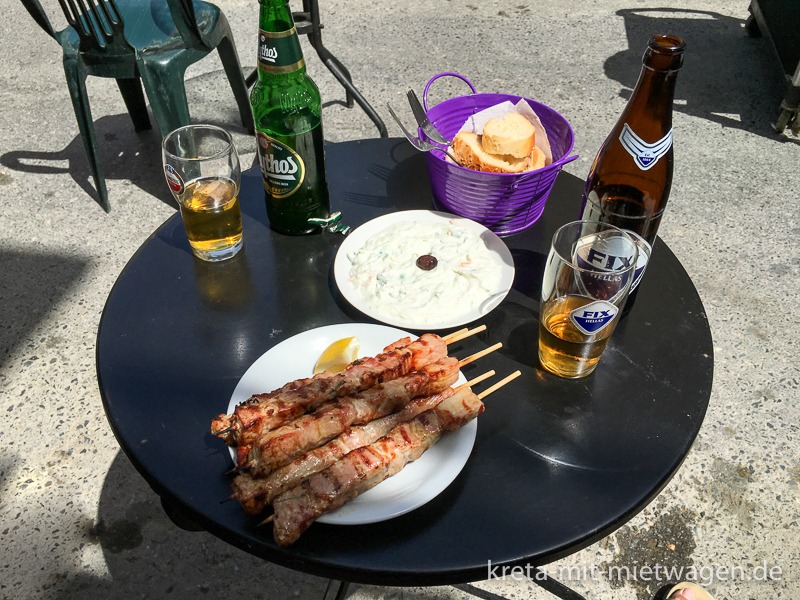
Deserved reward: Weekly market finale with Souvlaki
We leave the city in western direction and follow the main road. After about five kilometres we turn left towards Phaístos, the second largest Minoan excavation on the island, beautifully situated on a rocky ridge above the plain.
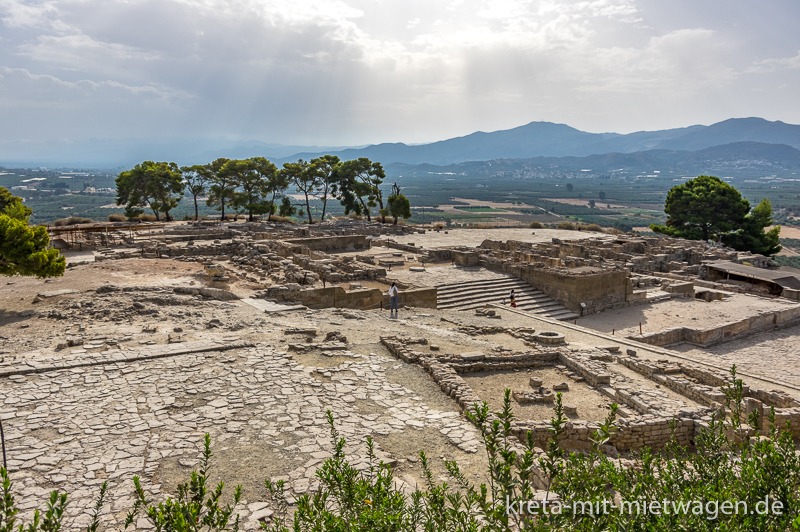
View over Phaistos to the Messara
Many say that it is the most beautiful Minoan palace complex on the island, as the excavation is very extensive and, unlike Knossos, „natural„.
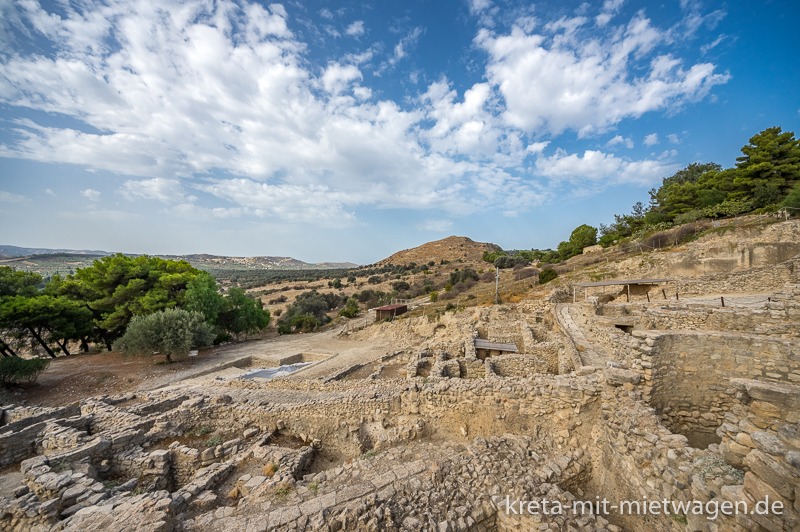
Phaistos
There was no Sir Arthur Evans here who lived out his personal fantasies about Minoan life in concrete and color, but everything is preserved in the original and carefully restored.

Phaistos
The small, historical church „Agios Georgios“ behind the parking lot of the complex at the street direction does not date from Minoan times, but is also worth seeing and photogenic.
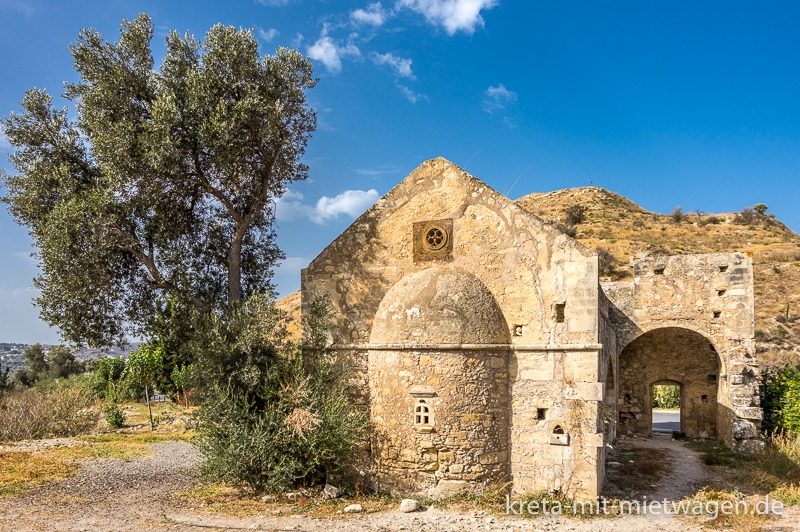
Church Agios Georgios near Phaistos
If one now drives from Phaístos in the direction of Sivas, one gets through the tiny little village Agios Ióannis.
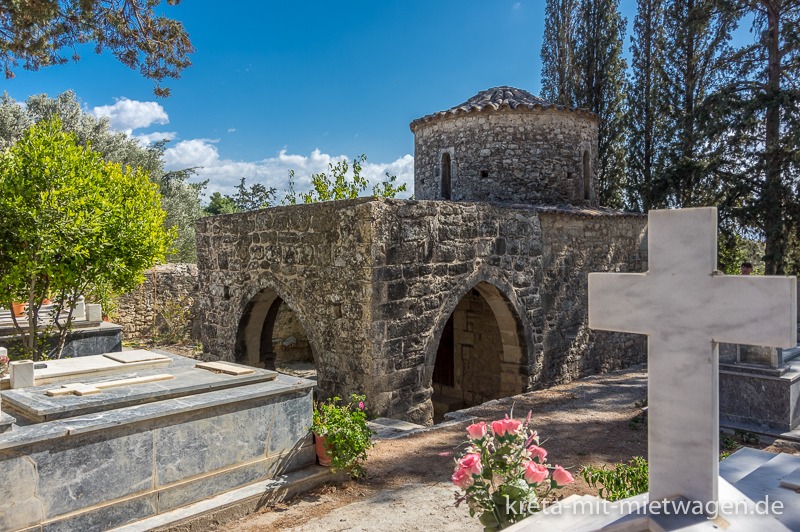
To the left of the road is the small chapel of Agios Pávlos, the oldest parts of which date back to the 5th century AD. Here you can see beautiful remains of frescoes and an interesting small cemetery with a bone chapel.

Painting in the church Agios Pavlos in Agios Ioannis
This place has an indescribable atmosphere, even if the church is now more often closed.
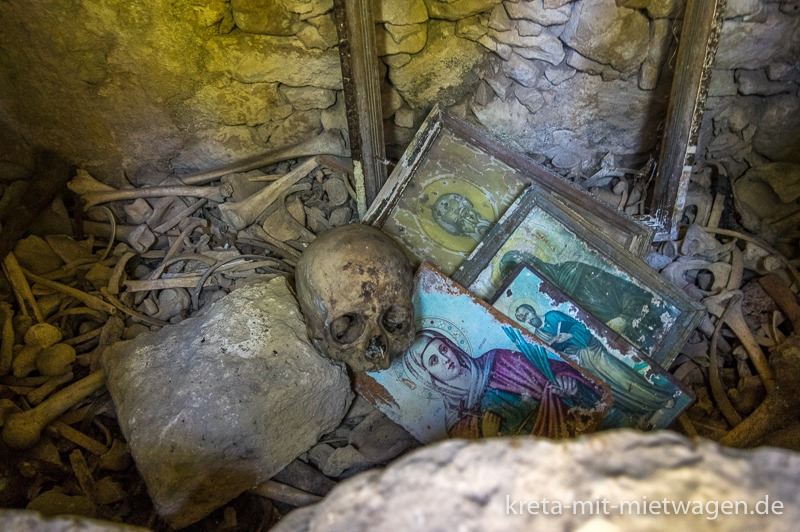
Bone Chapel of Agios Pavlos
Continue south until you see the tavern „Strofi“ („Στροφή“) on the right hand side before a crossroads. Turn left here onto the road coming from Matala towards Petrokefali.
After a short time you will see yellow stones with stylized donkeys on them at the roadside.
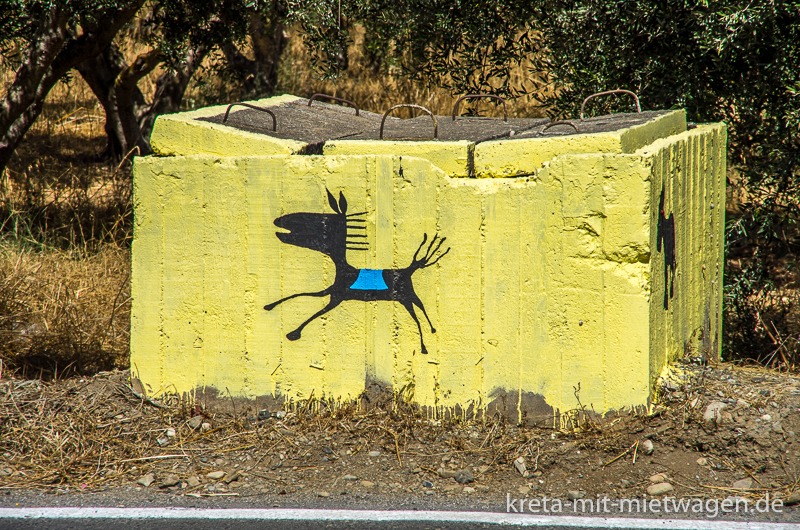
Agia Marina Donkey Rescue – the way to the donkeys
These are part of the signs to the Agia Marina Donkey Resort, which is primarily a graveyard for mostly old, exploited and often maltreated donkeys.
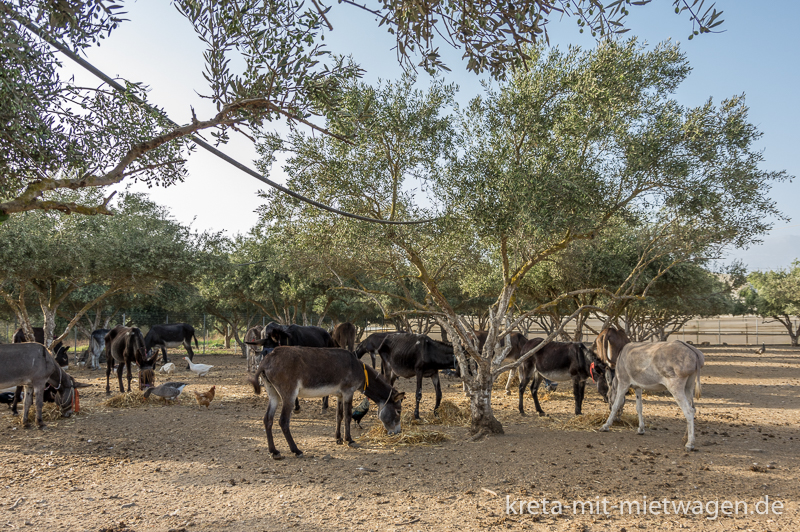
The donkey herd of Agia Marina
But not only the donkeys are helped here, but also often helpless cats and dogs, which are nursed up and placed in a loving home. Interested guests get a free guided tour of the area and can experience the very friendly donkeys up close.
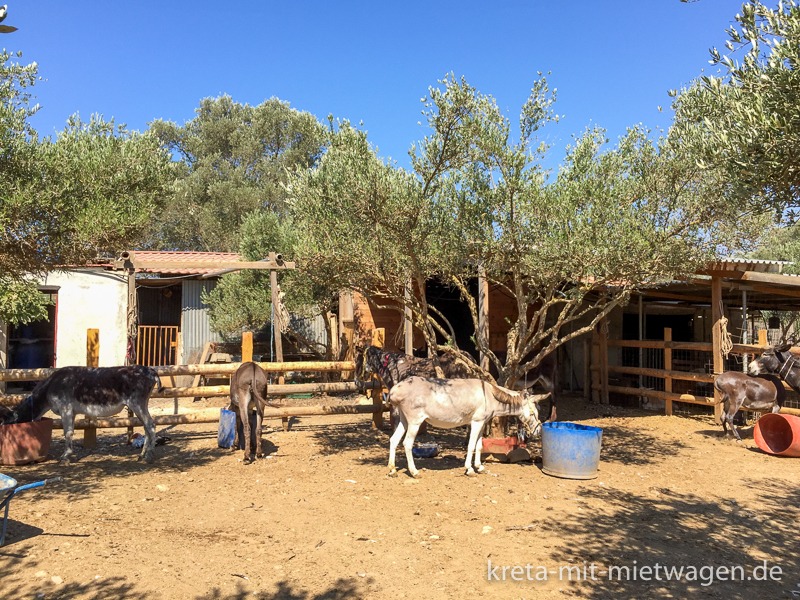
Agia Marina Donkey Rescue Resort
Donations in the form of money or sometimes a bag of carrots for the donkeys are always highly welcome. In order to keep the peace of the animals, there are limited opening hours, which are best read here on the website of the resort.
Passing the beautiful place Sivas (see also here our alternative route suggestion) we continue to Pitsídia, another lovingly renovated village with a very beautiful Plateía lined with mulberry trees with different taverns.
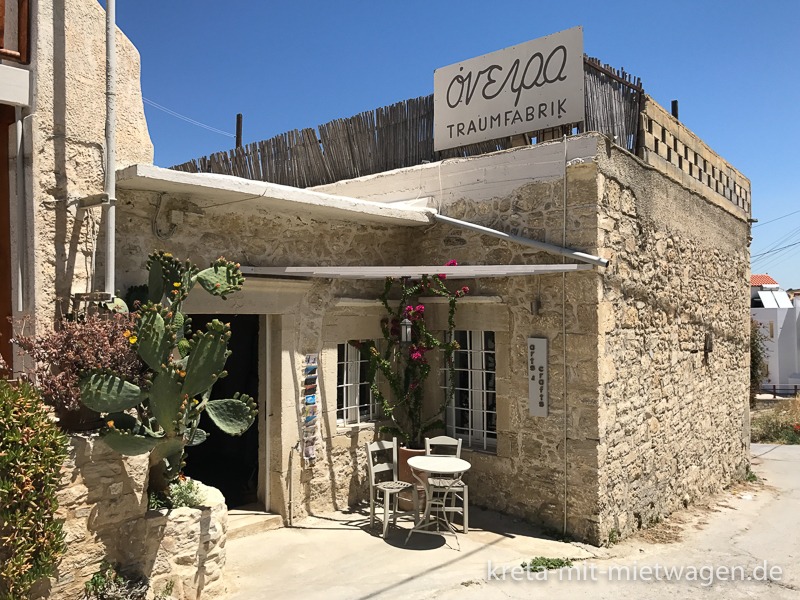
Onira – Traumfabrik – in Pitsidia
Here in Pitsidia there is also „Ónira“, the „dream factory“ as the german name „Traumfabrik“ is translated, a popular meeting place for German educated people (and those who think they are) with a beautiful, shady terrace.
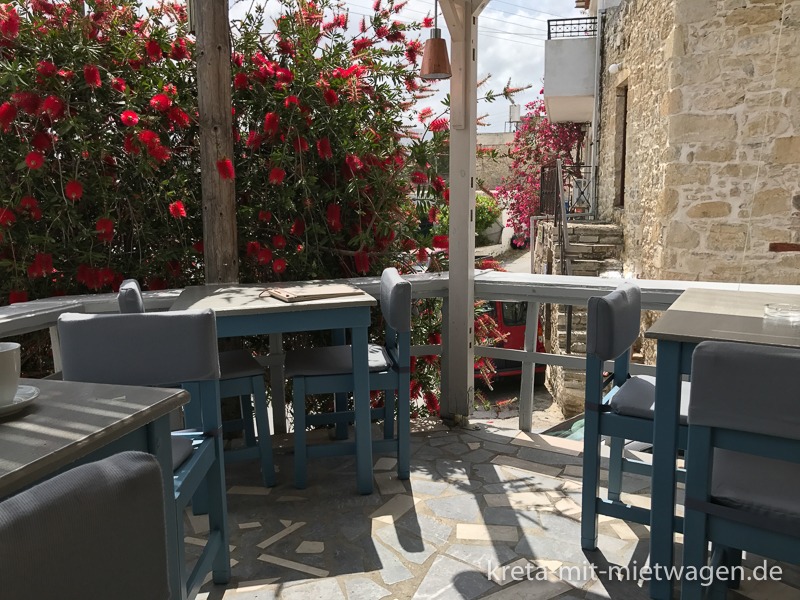
Onira – Traumfabrik – in Pitsidia
Since many years the restaurant has been run by Jaqueline and Horst, a goldsmith from Hamburg. In a historical oil mill a mixture of restaurant, café and shop for high-quality and very tasteful gold and silver jewellery and beautiful souvenirs has developed. This is where residents and holidaymakers meet. The good breakfast offer and the great cocktails are particularly popular here.
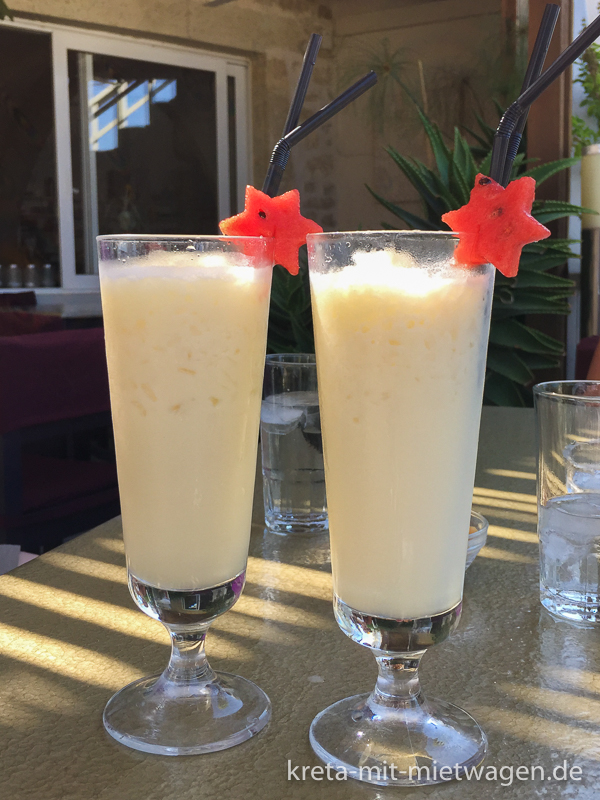
Onira – Traumfabrik – delicious Pina Colada
For bathing and strolling this time it goes to Mátala, a lively tourist place at the sea.
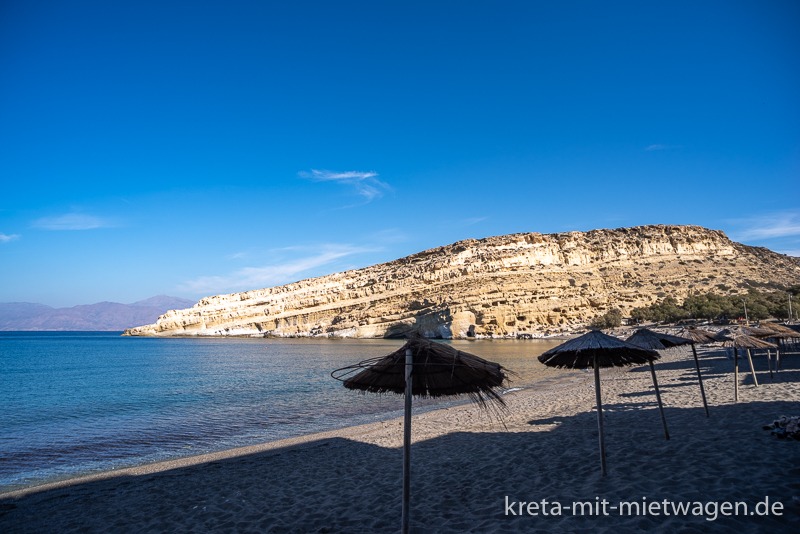
Matala beach and caves
Mátala became famous for its caves surrounding the local beach, where many hippies lived in the 70s. Here there is a preserved and newly invented hippie feeling until it squeals.
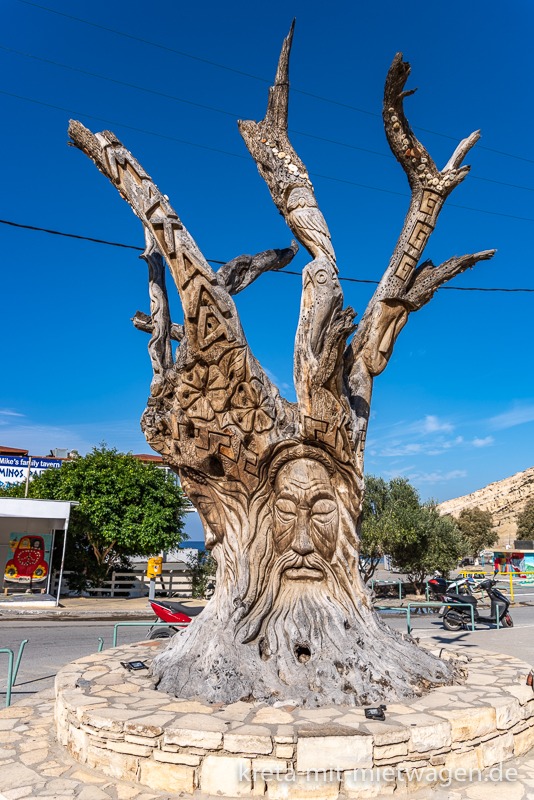
Deadwood with carving in Matala
A tree decorated with carvings, a VW beetle painted with flowers on the street, a bus as fresco on the house wall.
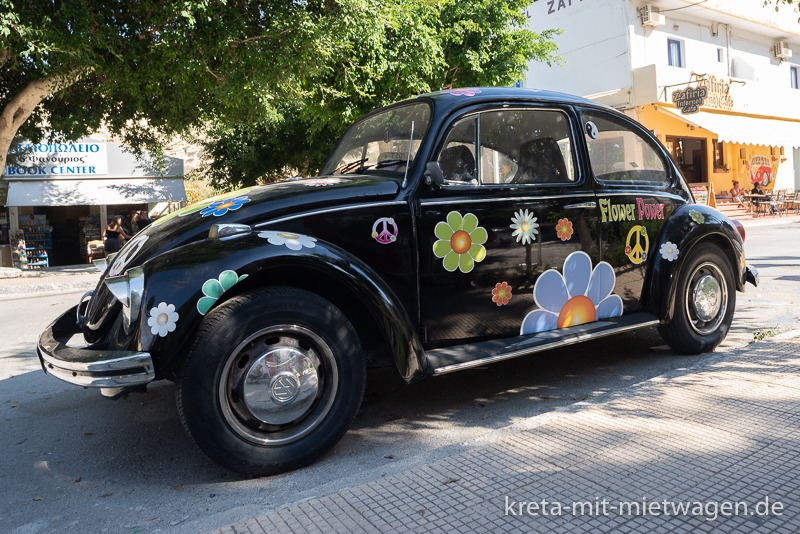
Typical Matala photo motive
Painted pavement and a bar that looks like an old pirate’s nest. All in all a quite coherent picture, even if some bad voices claim that this place looks like Hippie-Disneyland. And of course there should never be missing a photo of the famous Matala slogan „Today is life, tomorrow never comes“, which has been standing on the beach wall for decades and is regularly renewed…
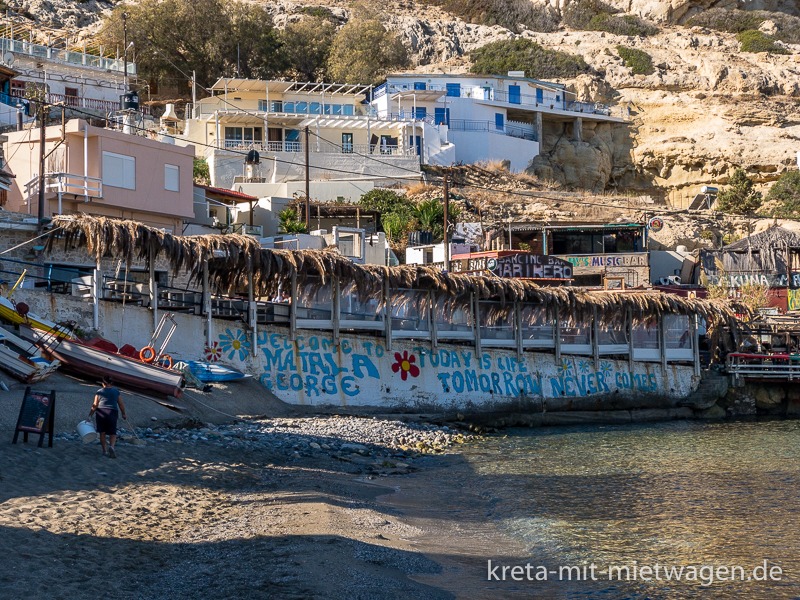
Today is life, tomorrow never comes
Go there and make your own picture.
If you are still here in the evening, you can enjoy one of the fantastic sunsets of the Cretan south here. Due to the offshore Paximadia Islands in the evening light and the beautifully illuminated rock walls, one often has a photo motif ready for a postcard.
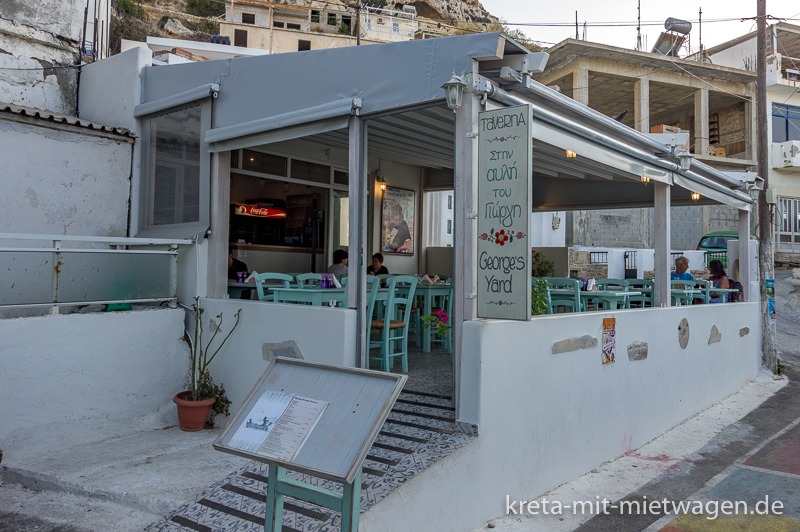
Our restaurant recommendation for Matala: The „Georges Yard“
Matala only becomes really cosy when the buses with the day tourists have disappeared. For those who can still stay, we recommend the „Georges Yard„, located directly at the „main road“ through the village, or the „Scala„, in the rocks at the end of the village.
